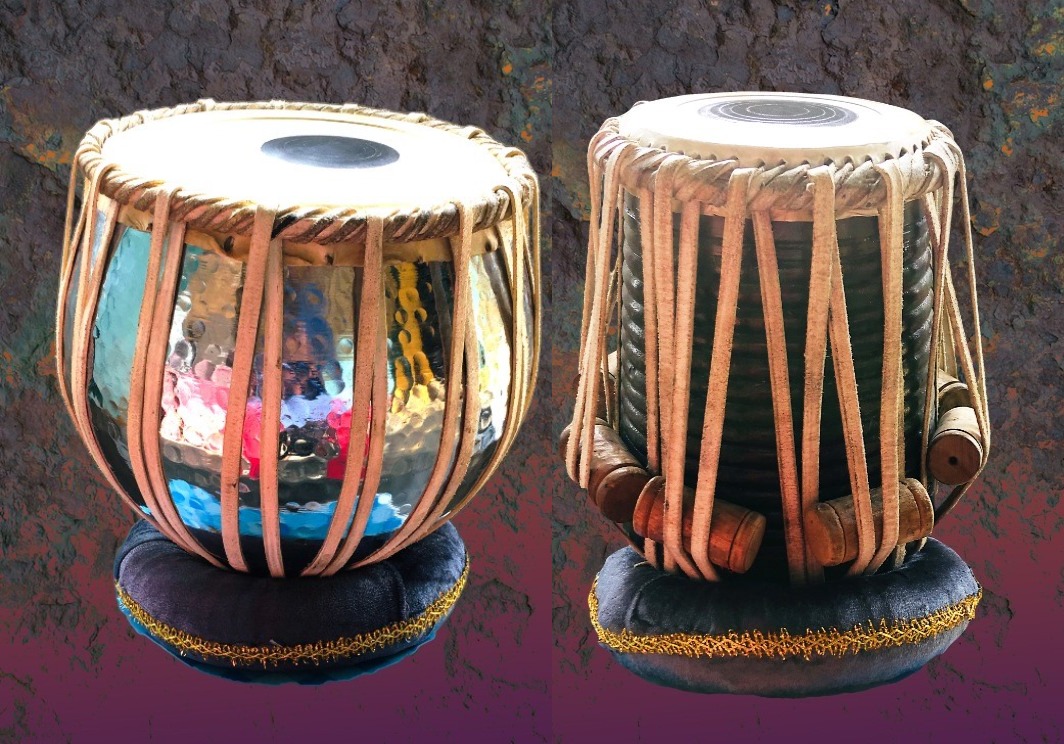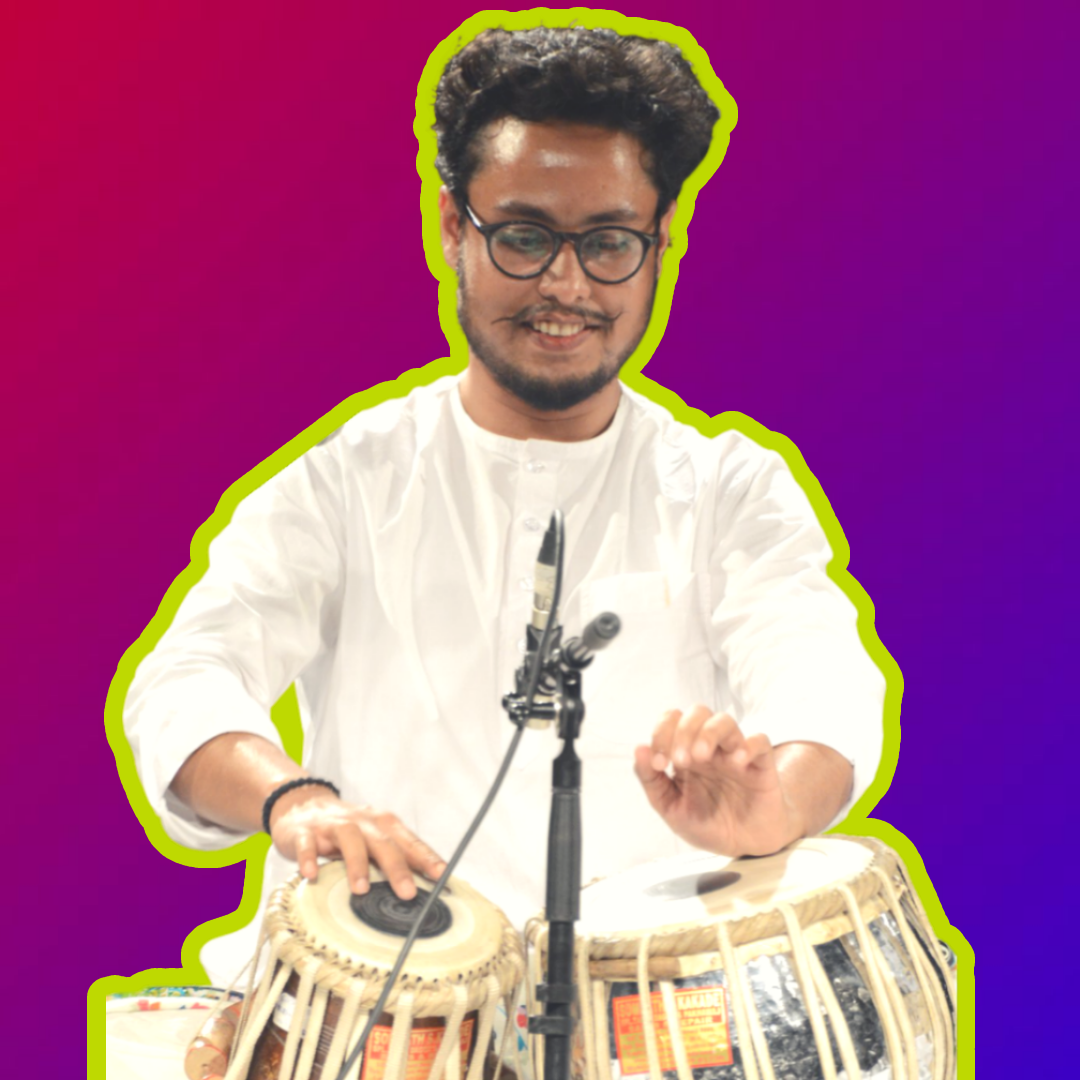The Accommodating Accompanist

Classical Music has been flourishing for thousands of years in the Indian subcontinent. The high priests of our music are the prime movers of this tradition. Our music stood the test of time and caprice of change owing to the contributions of the Great Masters of the past and present.
The Guru-Shishya parampara or discipleship: a teacher-centric collaborative approach considered as the best method of imparting knowledge has been monumental in preserving the Indian Classical Music and goads it towards height infinite.
Whether vocalist, Instrumentalist or dancer hardly had one measured an inch as a lone ranger when he required a partner either to collaborate with or be supported by and share thoughts. A skilful, supportive and understanding companion is a popular choice. A family of understanding spouses is a successful one. It's a joy to behold a child taking its first steps fearlessly to the caring accompaniment of parents. Even nature is revealed to us as a complex of simple, effect of causes; matter of spirits and vice versa- in other words, a harmony among several factors.
In the terminology of music, a supporting artiste is an accompanist. A good accompanying artiste is a part of the whole wherein good entails the qualities of skill, understanding, knowledge, training, etc. Another feature of an accompanist is intended to be highlighted here however, the accompanist not being an individual but an instrument.
The art of Tabla playing has garnered such complements that it has become an instrument of both solo and accompaniment for millions over the globe. The youngest of the sonorous siblings is privileged not to have evolved in the modern period; it bore testimony to indignation of the yester-years nonetheless when tabla players were looked down upon as citizens of the second order. This new progeny proved itself worthy of admiration when it looked beyond its firmament.
A civilization that has assimilated the best of the tradition and culture of its counterparts are sustaining amidst the treacherous trail of changes. None but we have felt the shadows of change which fell upon us from the time of Porus to the Britishers. The subcontinent holds its head in high esteem as we are the most accommodative instance of a living civilization.
Different cultures have been absorbed and assimilated in varied forms across different regions within our territory. Tabla is so malleable that it fits into any shape of expression- a striking feature of its popularity. It is one among the league of a few musical instruments and almost none of its classical counterparts that has been able to project itself globally owing to its capacity to mingle with different genres of music. In its country of origin India it has paired itself with the serious traditions of Dhurpad, Dhamar, Shastriya: Khayal, Upp-Shastriya: Tappa, Thumari, Dadra, Laghu-Shastriya Bhajan, Geet, Ghazal, even folk and what not! The globalisation of music took many of our stalwart artistes to foreign lands accompanied by what appeared to be a Pandora’s Box initially; when opened it moved both the lay-listeners and connoisseurs to appreciation and admiration with greeting applause of approval for both the artiste and the accompanist alike. This was a welcoming gesture to sit and draw on the common elements latent in both the forms of expression. Over the years Tabla has structured itself distinctly alongside drums, conga, tambourine, timpani, xylophone, marimba, etc with the genres of Jazz, Blues, Pop, Funk, Soul and even Rock.
As a solo musical instrument the Tabla has imbibed the nuances of its predecessors either in construction or shape or technique. Both classical and folk drums have enriched the compositional and acoustical inventories of Tabla. If it has incorporated the powerful Paran-angs of Pakhawaj so also we find the crispness of Dholak-ang compositions. Also the huge impact of region, language and musical-lineage commonly known as Gharana is a well-known fact. As an instrument of accompaniment, Tabla is subjected to what can best be described as aesthetic-restraint. Whether as a soloist or an accompanist Tabla is under the strict rule of Tala progression: accommodation is possible only within a congenial periphery.
Adaptability to the prevalent situations accordingly has protected and pushed our music through thick and thin. Fixity of a lofty tree uproots its life whereas the bow of a blade of grass protects it during a storm. It is in the hands of the present generation to assimilate whatever that is pleasing to the ears not until the ears have vigorously been trained in the trait to distinguish between pleasure and pain.
The Masters have quite recently in the long history of Tabla playing ventured into the prospect of sound. This shift in attitude has resulted in a cultural mix across genres of music of the world which are primarily acousti-centric. It is not a distant dream that the pinnacle of this art-form is realised soon; when Tabla expresses itself more prominently skirting itself majestically along the placid and stormy waters of music, thus spake the drum- ‘tab bhi bola' (तब भी बोला): I'm the most accommodating accompanist!

